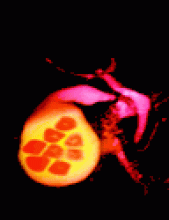Aboriginal Canadians bear a disproportionate risk of injury and illness compared with their non-Aboriginal counterparts.1 Age-standardized, all-cause mortality rates for our Aboriginal population are almost twice those of the whole population of Canada, men (561 v. 340 per 100 000) and women (335 v. 172 per 100 000) alike.2 A major contributor to these differences is traumatic injury and death, accounting for one-third of all deaths in the Aboriginal population.2
The article by Karmali and colleagues3 in this issue (see page 1007) is an important first step toward understanding this problem. This population-based, observational study describes the epidemiologic characteristics of severe trauma among status Aboriginal Canadians (First Nations individuals officially registered with the Canadian federal government under the Indian Act) within the Calgary Health Region. They found that severe trauma occurred almost 4 times as often among status Aboriginals as in a reference population of all other inhabitants of the region, an excess that held for men and women of all ages. Moreover, huge differences in rates were present for specific causes: assault (RR 11.1, 95% confidence interval [CI] 6.2– 18.6), traumatic suicide (RR 3.1, 95% CI 1.4–6.1) and motor vehicle crashes (RR 4.8, 95% CI 3.5–6.5), for example.
Before the epidemiologic characteristics of trauma in Canada's Aboriginal population and the reasons behind these statistics can be understood, several issues need to be addressed. First, it is important that trauma within Canada's Aboriginal population be assessed and documented, not just for mortality but also for associated morbidity. Morbidity, which is much more challenging to quantify, requires longer-term evaluation. Although most trauma patients survive their ordeal, few studies describe or quantify the associated morbidity, whether acute or long term. The social and economic costs of this morbidity are considerable, not only for the individual but also for their community. Accurate depiction of the true effect of trauma cannot be obtained from trauma registries or even regional hospital chart review, as much of the burden of injury and illness occurs after discharge. Some consequences from trauma are evident only during the recovery phase … or lack thereof. For example, a patient with multiple injuries from a motor vehicle crash may not die or undergo major medical complications while in hospital but may, along with their families (and indeed whole communities), experience psychosocial problems, disability, subsequent unemployment and other ill effects — effects that can last a lifetime and even extend to burden the next generation. Our current knowledge and available statistics do not reflect the short- and longer-term negative effects of trauma on these communities. Our efforts in trauma research must begin to address them.
Second, it is vitally important to include all Aboriginal populations in research projects and programs aiming to reduce the health burdens of traumatic injury. Canada's Aboriginal population includes not only status First Nations, but also the non-status First Nations, Métis and Inuit populations. Future research should also examine the morbidity and mortality of trauma among Aboriginal populations living on reserve or off, and assess differences between the urban and rural communities. A recent systematic review highlights these research limitations: only 1% of studies involving First Nation populations dealt with those living off-reserve; less than 2% provided information on urban Aboriginal people; and only 3% even addressed the issue of trauma, most commonly suicide.2 As shown by Karmali's group,3 even when a study population is well defined, identifying its members can be challenging and suboptimal. Although similarities across these Aboriginal populations will certainly exist, critical differences might be found that could guide proposed social, medical and political solutions for each specific community.
Third, the factors contributing to Aboriginal trauma must be identified and quantified. In the classic Haddon matrix,4 the root causes of these trauma statistics and outcomes can be expected to comprise various elements, including host /patient, vector and physical and social environmental factors.5 Whereas mortality data are dichotomous, causes of traumatic injuries and deaths require careful, in-depth evaluation of each square in Haddon's matrix.6 This evaluation must extend far past the obvious “drinking and driving” or “depression and suicide” cause-and-effect assumptions to question additional factors related to personal, social, environmental or economic components. Although less quantifiable than mortality statistics, these will shed valuable light on causative factors, which can be then be systematically addressed to decrease the incidence of traumatic injury and death in a specific population.
Fourth, as important as it is to develop better emergency treatment for Aboriginal trauma patients, we must also move beyond this to address other health-services issues. Geographic location often limits timeliness, access and level of health care available in rural and isolated regions, which constitute well-documented predictive factors for trauma outcomes.7,8 Health services may lack culturally sensitive care, perhaps exacerbated by the persisting under-representation of Aboriginal professionals in health care.1,9 Delivery of health care in remote and rural regions across Canada is an ongoing struggle; a novel approach is the development of northern medical-school campuses in British Columbia (by the University of British Columbia) and Ontario (by the Northern Ontario School of Medicine) to train physicians “in the north, for the north.” Although vital, solutions to the trauma epidemic in our Native populations must look past the emergency departments and surgical suites that care for the injured, to the individual, community, environmental, social and economic factors that set the scene for these traumas.
Last, and perhaps most importantly, each step in this vital process cannot be done for Canada's Aboriginal population; it can only be done with us. These issues cannot be addressed without understanding Canada's history with its Aboriginal people, as each of these steps, from surveillance to solution to program implementation, can no longer be imposed on or adapted to the community without its approval and participation.
Traumatic injury and death may be the most preventable of all health issues. It is time that we, as health care professionals and researchers, treated them as such.
𝛃 See related article page 1007
Footnotes
-
Competing interests: None declared.








